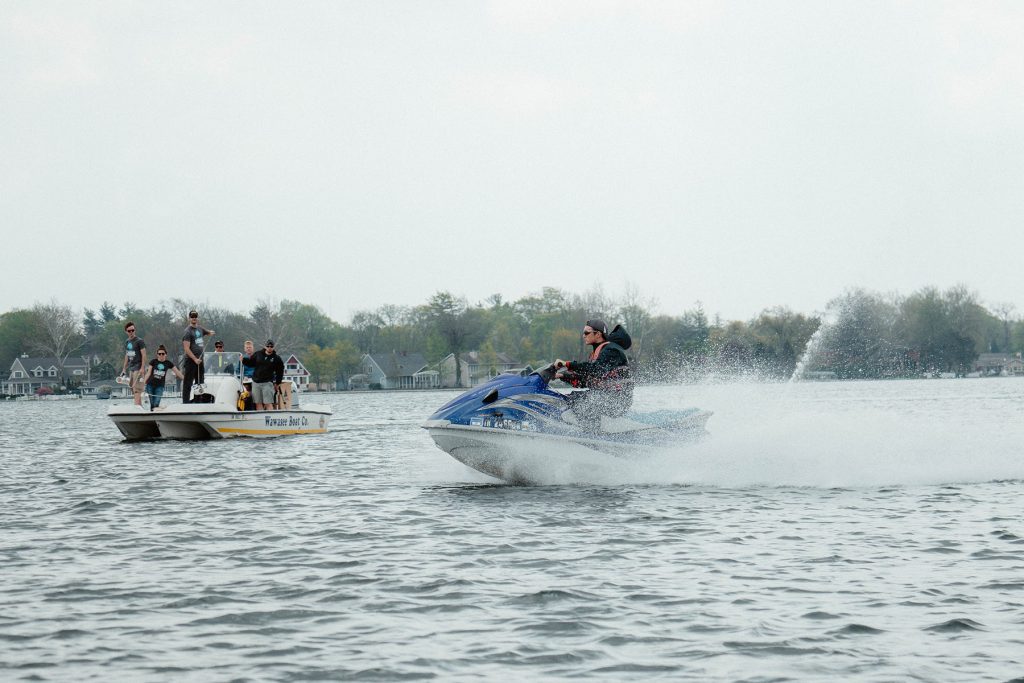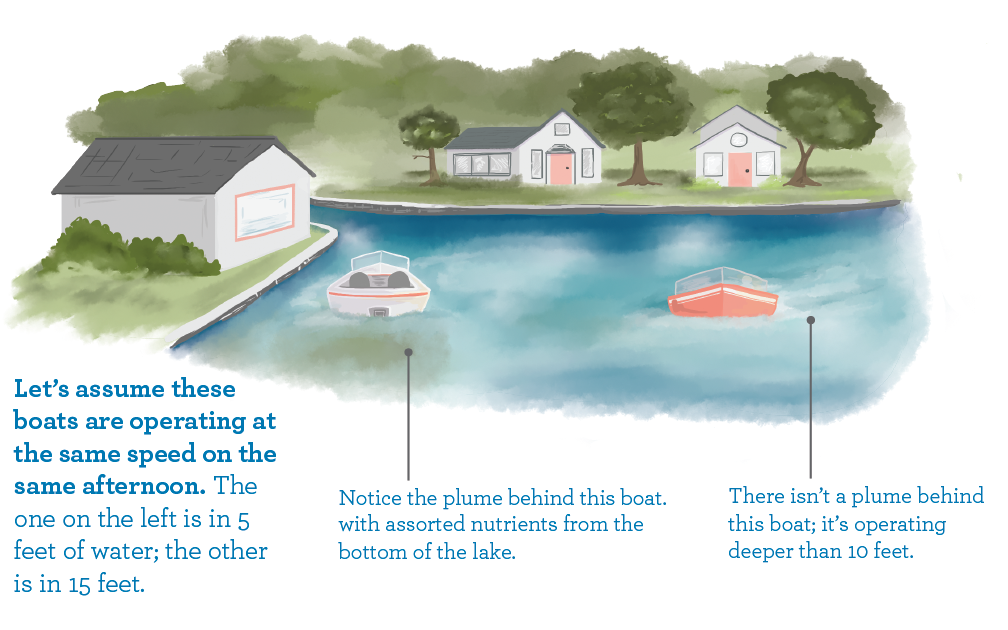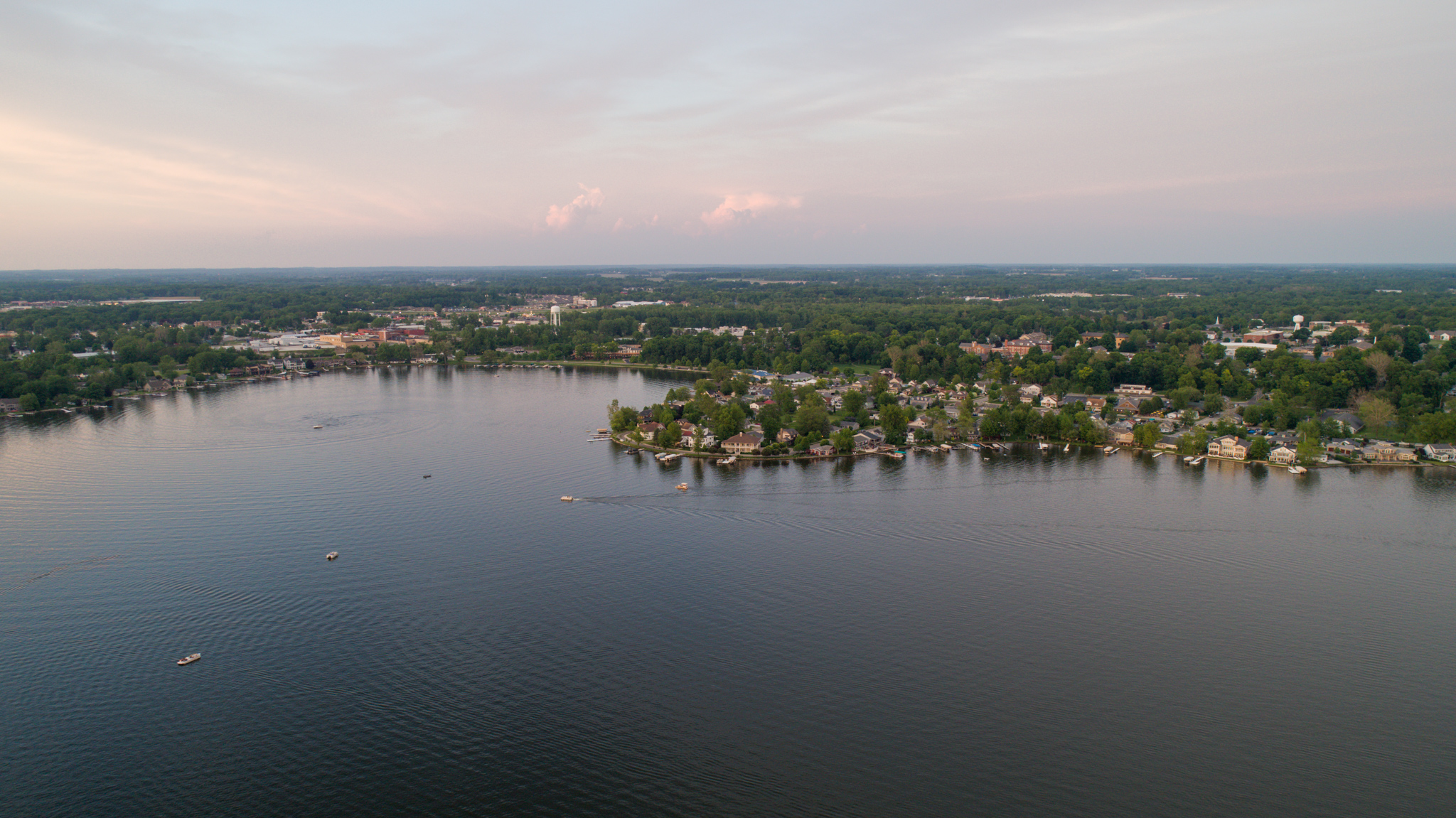Wakes on Lakes: How boating causes algae and weeds to grow
Have you noticed how lake water becomes murky or cloudy after a busy day on the lake? Not only does murky water reduce the visual appeal of our lakes, but it can also have an impact on the health of a lake. Another name for murky water is turbid water. Turbid water is a result of suspended particles of sediment and algae. Turbidity is often caused by one of the most-loved summertime activities: boating!
This is the bottom line: boating in at least 10 feet of water for any activities that create a wake will reduce the chances of stirring up nutrient-rich sediment. That means fewer nutrients for algae and weeds to grow in your lake!

Let’s talk about the importance of nutrients
When healthy quantities of nutrients enter a lake such as one of Kosciusko County’s all-sport lakes, the ecosystem is balanced. Nutrients not consumed by the lake food chain are captured in the materials on the lake floor, also called the bottom substrate.
Conversely, when nutrients are present in large quantities, algae and weeds can become out of balance with other parts of the lake ecosystem. They quickly absorb nutrient-rich water and use it to produce more weeds and algae. Then they can overwhelm wildlife habitats, stifle native species, and reduce the recreational quality of the lake.
How does boating contribute to excess nutrients?
One way weeds and algae gain access to additional nutrients is thanks to boat propellers or jets that come too close to the bottom substrate. Think of a snow globe. When the water is calm, the snowflakes settle at the bottom of the globe. Once you shake the snow globe, the snowflakes fly back into the water. Similarly, a boat passing through shallow water stirs up the bottom substrate and releases nutrients back into the lake.

The Lilly Center conducted an impact study on our biggest lake, Lake Wawasee, to research this very issue. The research team used a combination of nutrient and sediment sampling, water quality sensors, underwater video, and aerial photography to measure the impact of boating on the bottom substrate. They used the five most common kinds of watercraft (loaned by Wawasee Boat Company) and operated them at three speed categories over sand, marl, and two muck substrate types in multiple depths of water.

What were the results? Analysis of the data taken at the time showed that when a boat is operated at any speed in water 10 feet or deeper, no measurable sediment (and therefore nutrients) is kicked up. This is great news for recreational boating! However, the study showed that watercraft operating at speeds that produces a wake in less than 10 feet of water can resuspend sediment from the bottom substrate. In this scenario, the boat action releases nutrients back into the water and makes excess weeds and toxic algae blooms more likely.
What does this mean for summer recreation?
It is possible to have fun on your lake, keep it visually attractive, and make it safe and healthy to use. As you get back out on the lake, look for at least 10 feet of water before beginning activities that produce a wake. The bottom of the lake will remain undisturbed and fewer nutrients will be available for weeds and algae to consume. And, as an added bonus, the lake will appear clearer!
Keep this in mind as you enjoy the water and help protect your lake!

Clean lakes vs. clear lakes: what's the difference?
If your lake is clear, that must mean it is clean…. right? Well, from a scientific perspective, a clean lake does not have to be clear – and a clear lake is not always clean.